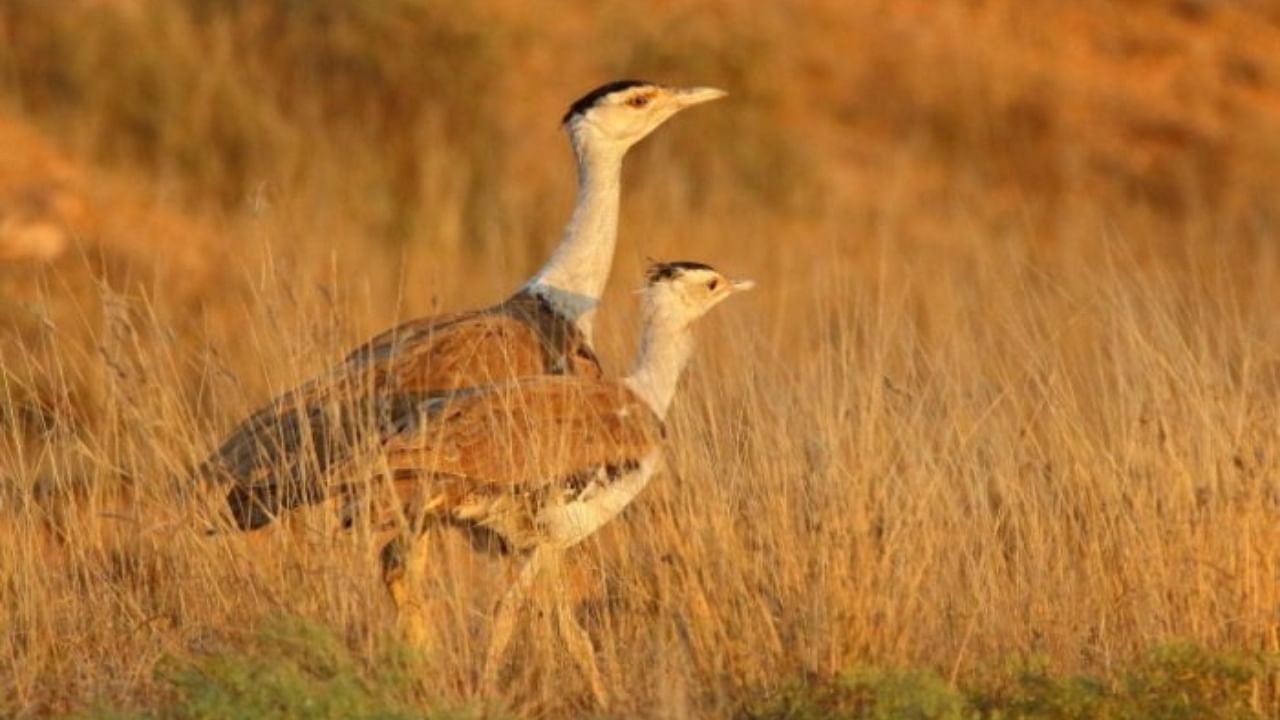
The Union Environment Ministry on Thursday asked Karnataka, Gujarat and Maharashtra to submit proposals on establishing conservation and breeding centres for the Great Indian Bustard, which is on the verge of extinction.
“The meeting of the Standing Committee of National Board for Wildlife today deliberated on various policy matters related to wildlife conservation and protection of the Great Indian Bustard,” Union Environment Minister Bhupendra Yadav tweeted. “Gujarat, Karnataka and Maharashtra have been requested to submit proposals to set up Conservation Breeding Centres.”
The ministry officials, however, didn’t disclose what are the proposals that the Standing Committee discussed and if there was any forward movement in implementing the Supreme Court’s direction of under-grounding power cables in large tracts of Rajasthan and Gujarat to save the near-extinct bird.
Since the Great Indian Bustards lack frontal vision, they can’t detect the power lines ahead and manoeuver around power lines within close distances because of their weight. The power transmission lines, therefore, pose the biggest threat to the species.
The ministry in March informed the Parliament that there were around 150 Great Indian Bustards left across the country which included 128 birds in Rajasthan and less than 10 birds each in Gujarat, Maharashtra, Andhra Pradesh and Karnataka.
While the government plans to open up a Conservation Breeding Centre for the Bustards at Kota, a satellite centre is operational at Sam near Jaisalmer where 16 GIB chicks, (artificially hatched from eggs collected from wild) are being reared. The Wildlife Institute of India, Dehradun manages the centre.
With the ministry looking to set up more such centres, wildlife experts are wondering about the utility of the breeding centres without protecting the bird’s natural habitat.
Last year, the Centre approached the Supreme Court seeking modification of its order on under-grounding of transmission cables in the GIB habitat arguing that such a directive would adversely impact India's solar and wind energy potential.
